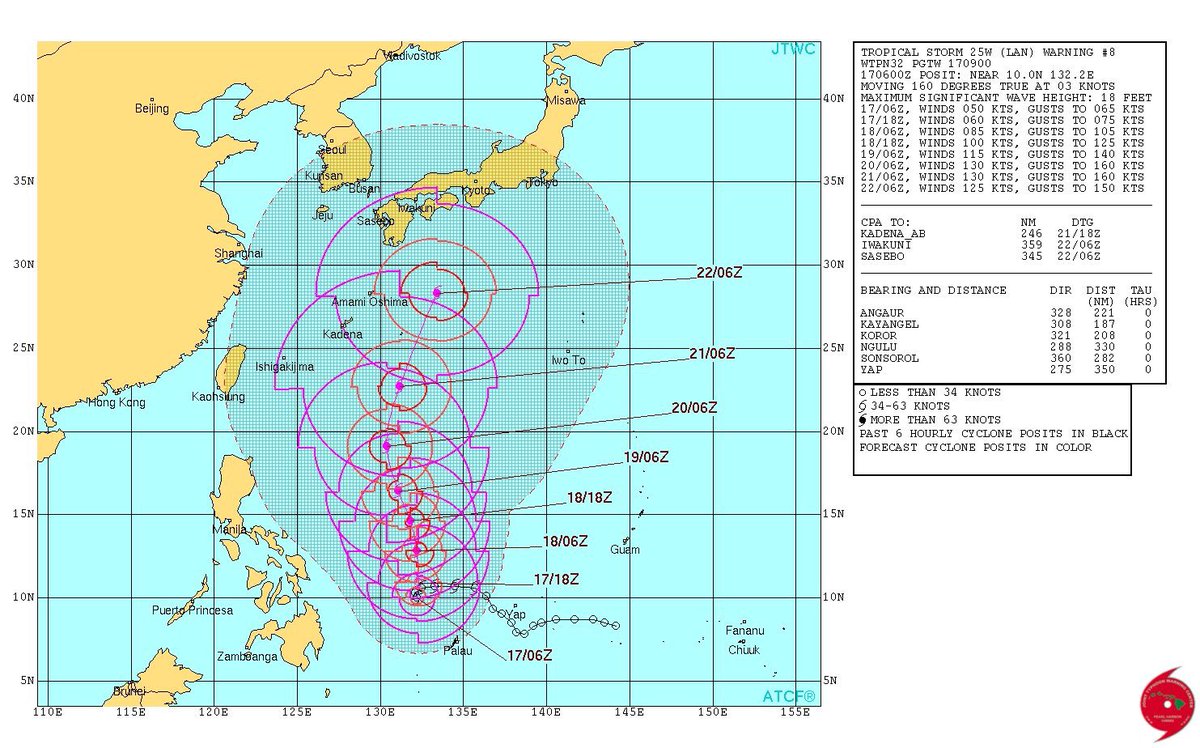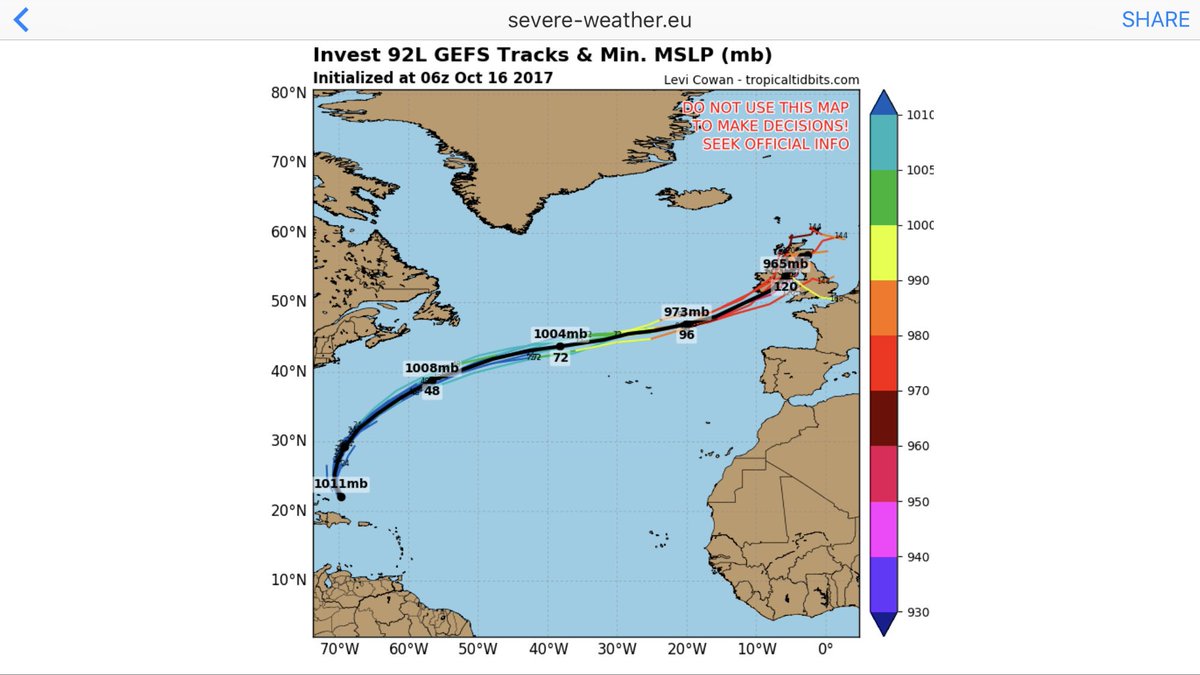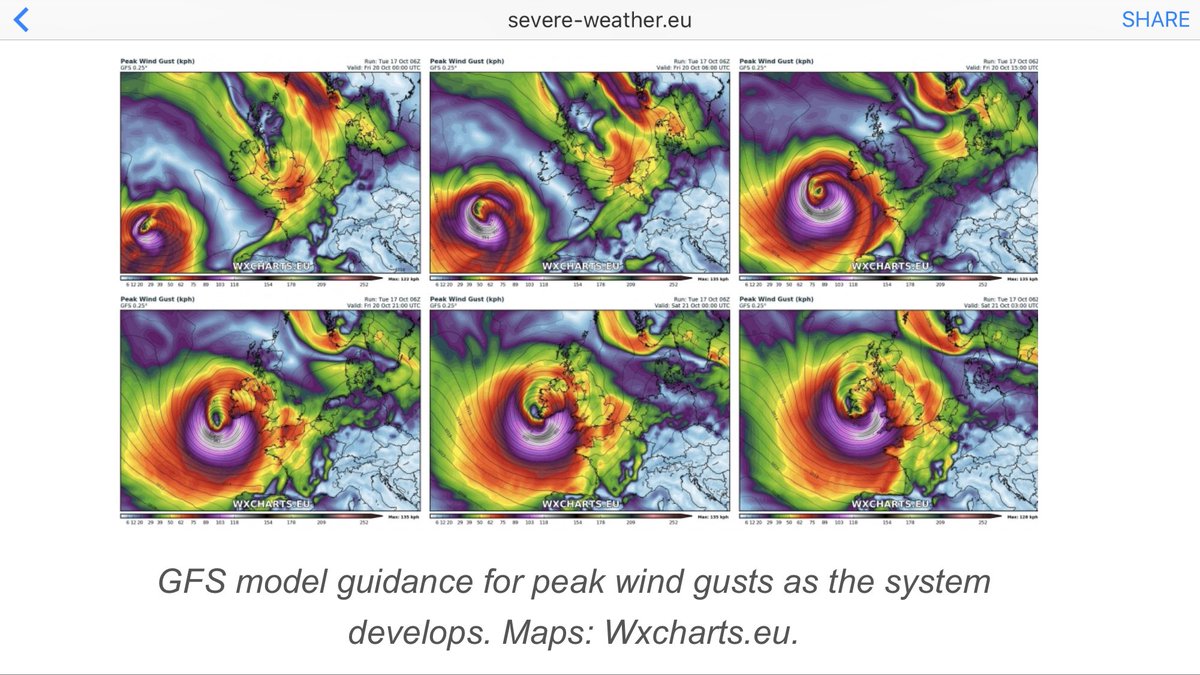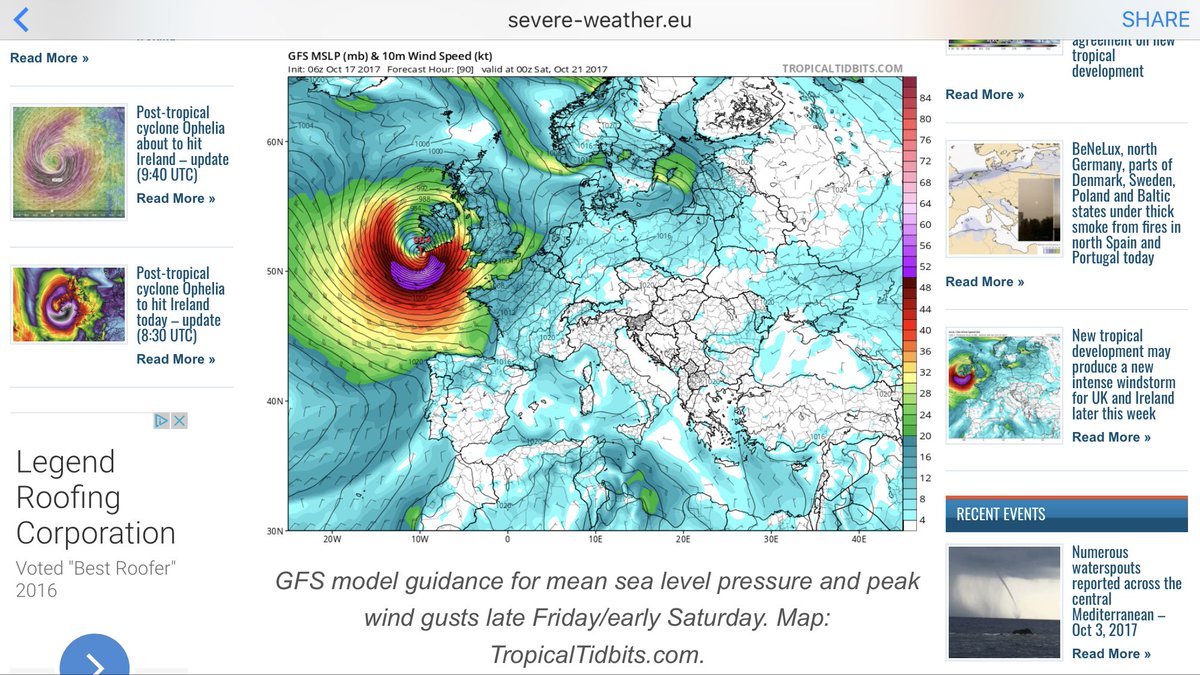Another Historic Storm: Surreal Ophelia Strikes Ireland with Hurricane Force
“Ophelia
is breaking new ground for a major hurricane. Typically those waters
[are] much too cool for anything this strong. I really can’t
believe I’m seeing a major just south of the Azores.”
*****
17
October, 2017
Warmer
than normal ocean temperatures due
to human-forced climate change are now enabling major hurricanes to
threaten Northern Europe. A region that was traditionally considered
primarily out of the range of past powerful Atlantic Ocean hurricanes
under 20th Century climatology. One that, in a warmer world, is
increasingly under the gun.
On
October 14, Ophelia
hit major hurricane status as it moved swiftly toward Europe.
Packing 115 mph maximum sustained winds over a
region of ocean where we’ve never recorded this kind of powerful
storm before,
Ophelia set its sights on Ireland. Crossing over warmer than normal
North Atlantic Ocean waters, the storm maintained hurricane status up
to 12 hours before barreling into Ireland. At that time, cooler
waters caused the storm to transition to extra-tropical. But this
transition was not enough to prevent Ireland from being
struck by hurricane-force gusts up to 119 mph,
storm surge flooding, and seeing structural damage reminiscent to a
category one storm.
360,000
power outages and two deaths were attributed to a storm that should
have not maintained such high intensity so far north and east.
Yet another historic storm that forced the National Hurricane
Center to
shift its tracking map east of the 0 degree longitude line(Greenwich)
since they had not planned for a hurricane or its tropical remnants
to move so far out of the typical zone for North Atlantic hurricanes
(see image at bottom of page).
the terrifying beauty of mama nature #Ophelia pic.twitter.com/k2GmMxRcPV
— Stiofan mac (@REDEARL777) October 16, 2017
(Human-caused
climate change produces angrier seas off Ireland as amped-up Ophelia
rages.)
As
with many of the recently powerful storms, 1
to 2 degree Celsius above average sea surface temperatures were a
prime enabler allowing
Ophelia to maintain such high intensity so far north. And under the
present trend, it appears that the Atlantic coasts of Spain,
Portugal, France, Ireland and England are now all more likely to see
tropical storm and hurricane impacts in the future as sea surface
temperatures continue to rise. In the past, strikes by tropical
cyclones to places like Ireland were considered to be rare — with
the last Hurricane to impact Ireland being Debbie in 1961. But
recent climate
science studies indicate
that global
warming is likely to increase the frequency of hurricane and tropical
storm impacts to Northern Europe:
In a paper published in April 2013, the Royal Netherlands Meteorological Institute predicted that by the year 2100, global warming would greatly increase the threat of hurricane-force winds to western Europe from former tropical cyclones and hybrid storms, the latter similar to Hurricane Sandy in 2012. One model predicted an increase from 2 to 13 in the number of cyclones with hurricane-force winds in the waters offshore western Europe. The study suggested that conditions favorable for tropical cyclones would expand 1,100 km (700 mi) to the east. A separate study based out of University of Castile-La Mancha predicted that hurricanes would develop in the Mediterranean Sea in Septembers by the year 2100, which would threaten countries in southern Europe.
The
present Atlantic hurricane season can now only be described as a
surreal caricature of what we feared climate change could produce.
Texas, Florida, Puerto Rico and a dozen or more Caribbean islands are
now devastated disaster areas. Some locations may feel the effects of
the off-the-charts powerful storms enabled by a warmer than normal
ocean for decades to come. Puerto Rico, unless it receives far more
significant aid from the mainland than the Trump Administration
appears to be willing to provide, may never fully recover. And
now Ophelia has maintained hurricane status until just twelve hours
before striking Europe’s Ireland as a powerful extra-tropical
storm.
This figure really says it all. #Ophelia is a huge outlier from the typical envelope of major hurricane tracks in the Atlantic pic.twitter.com/5K3k7vdgRr
— Sam Lillo (@splillo) October 14, 2017
2017
has also been an extraordinary year basin-wide by measure of storm
energy.
Total accumulated cyclone energy (ACE) for the North Atlantic as of
October 15 was 222.5. So far, according to this measure, 2017 is the
7th strongest hurricane season ever recorded since records began in
1851. The most intense season, 1933, may see its own record of 259
ACE exceeded over the coming days and weeks. For storms still appear
to be forming over record warm waters. According
to the National Hurricane Center,
a disturbance off the East Coast of the United States now has a 40
percent chance of developing into the season’s 16th named storm
over the next 48 hours. Meanwhile, during recent years, powerful late
October storms like Matthew and Sandy have tended to crop up over
warmer than normal ocean waters even as late season storms ranging
into November and December appear to be more common. In other words,
we’re not out of the woods yet and 2017 may be a year to exceed all
other years for total measured storm intensity as well as overall
damage.
(UPDATED)
Links:
Hat
tip to Eleggua
Hat
tip to Jeremy in Wales
This is not the end of the story








No comments:
Post a Comment
Note: only a member of this blog may post a comment.